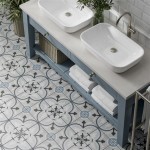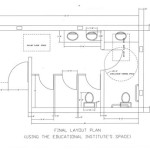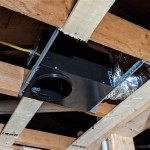How to Install Bathroom Handrails
Installing bathroom handrails can significantly enhance safety and accessibility, particularly for individuals with mobility challenges or older adults. These rails provide essential support for entering and exiting the shower, using the toilet, or navigating around the bathroom. The process of installing handrails may vary depending on the specific design and materials used. However, this article outlines a general guide to installing bathroom handrails, covering essential steps and safety considerations.
1. Planning and Preparation
Before embarking on the installation process, thorough planning and preparation are crucial. The first step involves selecting the appropriate handrail. Consider factors such as the length, diameter, and material of the handrail. For instance, stainless steel or chrome-plated handrails are durable, corrosion-resistant, and aesthetically appealing. However, it is essential to choose a material that complements the existing bathroom decor and meets accessibility standards.
Next, determine the optimal placement of the handrails. Ideally, handrails should be positioned at a height that allows for comfortable and secure grasping. The standard height for grab bars is 33 to 36 inches above the floor. However, it is advisable to consult relevant accessibility guidelines or consult with a professional to ensure proper placement. It is also crucial to ensure that the handrails offer sufficient support and stability when in use.
Once the handrail location is finalized, it is essential to check for any obstructions, including electrical wiring, plumbing pipes, or structural elements. If necessary, adjust the placement of the handrail to avoid interfering with existing fixtures or utilities. Furthermore, take into account the weight capacity of the handrail and ensure it can support the expected load.
2. Installing the Handrail
After careful planning and preparation, the installation process can begin. Start by marking the desired handrail location on the wall or floor. Use a level to ensure that the markings are straight and horizontal. It is important to note that installing handrails on drywall requires additional considerations. Depending on the type of drywall, the installation process may involve using specialized anchors or attaching the handrail to wall studs for enhanced stability.
Next, drill pilot holes using a drill bit that is slightly smaller than the diameter of the mounting screws. The depth of the pilot holes should be sufficient to allow the screws to penetrate the wall or floor material securely. After drilling the pilot holes, attach the handrail brackets using the provided screws or fasteners. It is important to ensure the brackets are securely fastened and aligned with the handrail.
Finally, slide the handrail into the brackets and secure it in place. It is advisable to use a level to ensure that the handrail is installed horizontally. Once the handrail is securely attached, test its stability and ensure it provides adequate support. If necessary, tighten any loose screws or fasteners.
3. Safety Considerations
Safety is paramount when installing bathroom handrails. It is crucial to use appropriate safety gear, including safety glasses, gloves, and work boots. These precautions minimize the risk of accidents or injuries while working with tools and materials. Additionally, always prioritize safety by ensuring adequate lighting and ventilation in the work area.
It is also essential to follow the manufacturer's instructions for installing the handrail. These instructions provide detailed guidance on the installation process, safety precautions, and proper use of the handrail. If you are unsure about any aspect of the installation, it is advisable to consult a professional who has experience in installing bathroom handrails. Their expertise can ensure that the handrail is installed correctly and meets safety standards.
Furthermore, it is important to assess the quality of the handrail and its components. Ensure that the brackets are sturdy and the mounting screws are appropriate for the wall or floor material. If any components appear damaged or defective, replace them immediately to avoid potential safety hazards.

How And Where To Install Bathroom Safety Rails Grab Bars

Shower Bar How To Install Bathroom Grab Bars Diy Family Handyman

Installing Grab Bars In Your Bathroom A Complete Guide

Where Should Toilet Grab Bars Be Installed Freedom Showers

How To Install Grab Bars The Home Depot

How High Should Grab Bars Be Installed Right Bar Height

Proper Shower Grab Bar Placement Keeps Your Family Safe Improveit

Proper Shower Grab Bar Placement Keeps Your Family Safe Improveit

Where To Install Grab Bars Add Safety Stability Your Home

Home Grab Bar Pros
Related Posts







